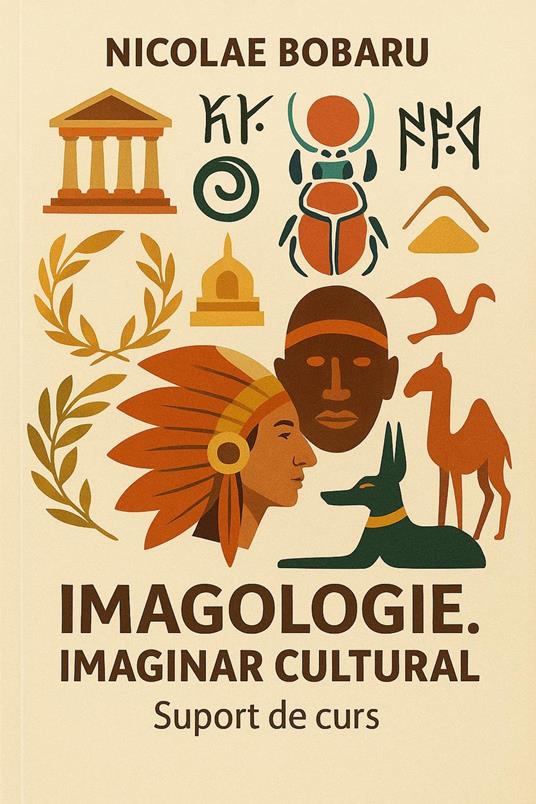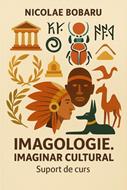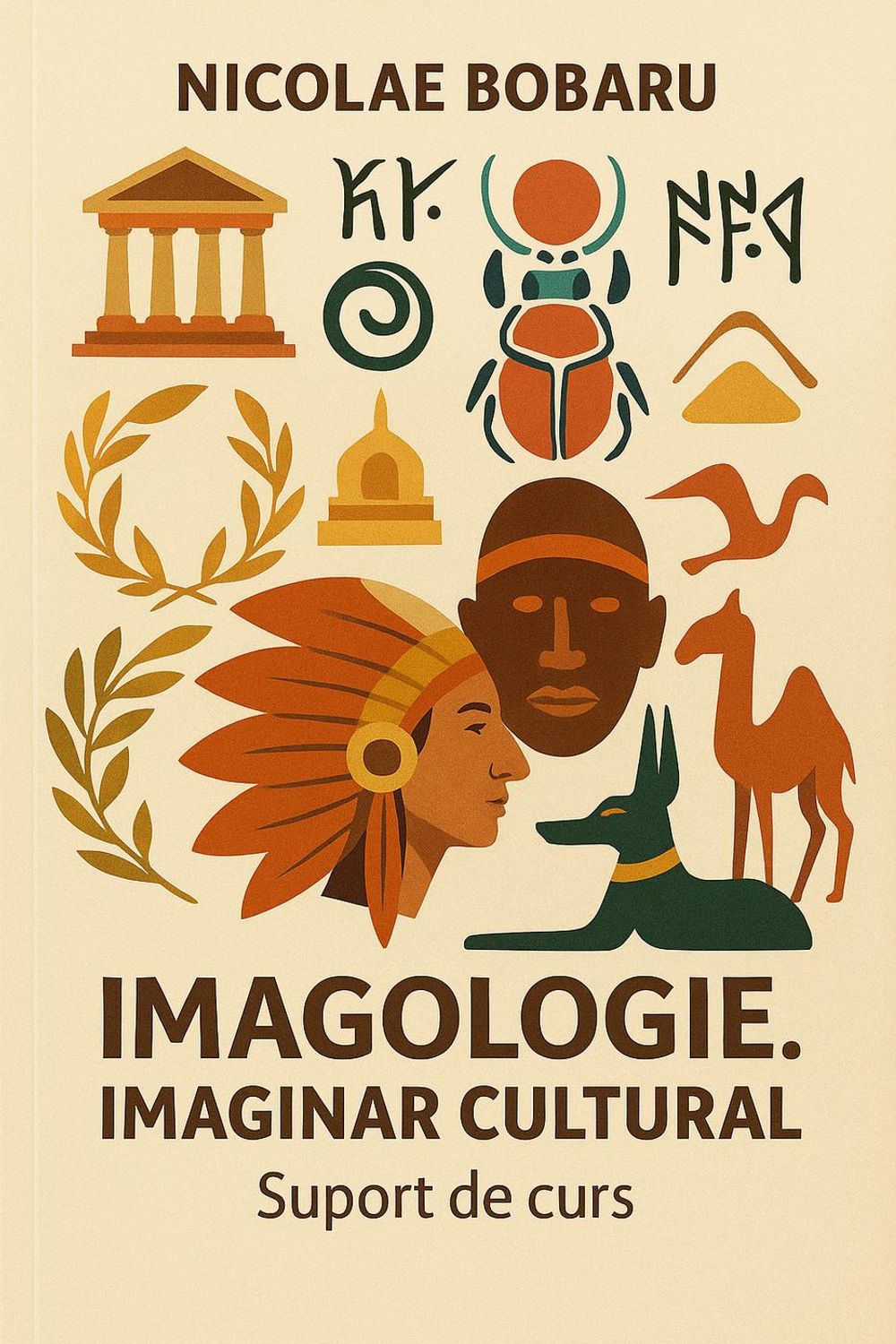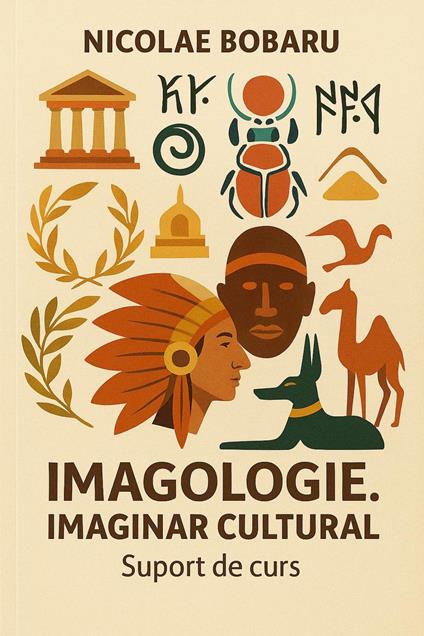Imagologie. Imaginar cultural. Suport de curs
This is more than a handbook: it is an invitation to explore how cultures imagine themselves and others, how identities are shaped through representation, and how stereotypes persist, adapt, and acquire political weight. Moving from ancient depictions of "barbarians" to medieval religious stigmatisations, from Romantic visions of the Orient to the globalised, digital images circulating today, the book traces the deep history of alterity as cultural construction. Structured into thirteen chapters, it begins with definitions and methods: what "image" means in imagological terms, the difference between auto-stereotypes and hetero-stereotypes, and why they are not simply prejudices but structures with social functions. The genealogy then unfolds: Herodotus and classical ethnography; medieval chronicles shaped by religious boundaries; Renaissance encounters with the "New World"; Enlightenment climate theories and racial classifications; Romantic exoticism; nineteenth-century nationalist clichés; and finally, the comparative literature tradition that gave imagology academic form in the twentieth century. Philosophy provides another foundation. Figures of monsters and hybrids reveal how societies test the limits of order, while modern thought—Levinas on the face of the Other, Nancy on "being-with"—frames alterity as an ethical call and as the condition of community. Literature remains the privileged laboratory: from epics and Shakespearean drama to Melville, Joyce, or postcolonial fiction, it crystallises, circulates, and sometimes dismantles stereotypes. The book also addresses central political themes, including nation, race, and identity as symbolic constructs; colonial and postcolonial discourses that justified domination and inspired resistance; religion as both a frontier of exclusion and a potential bridge; trauma and war as producers of radical otherness; and whiteness as a critical category of cultural dominance. Contemporary chapters explore migration, diaspora, globalisation, and digital media, demonstrating how memes, films, and online narratives recycle old clichés and generate new forms of representation. A distinctive feature is the focus on Romanian imagology. The author examines how foreign travellers described Romanians in ambivalent terms—hospitable yet backward, European yet Oriental—how local intellectuals responded with counter-images of dignity, hospitality, or endurance, and how modern literature and diaspora narratives reshape these representations under globalisation. This local perspective grounds the theoretical framework in concrete examples, offering Romanian readers a mirror for self-reflection within broader European and global debates. Throughout, the style combines clarity with academic rigour, aiming not at exhaustive quotation but at constructing a coherent panorama. Each chapter balances conceptual explanation with applied examples, making the material accessible to students while stimulating critical thought. Imagology appears not only as a branch of comparative literature but also as an interdisciplinary field intersecting with anthropology, sociology, philosophy, media studies, and postcolonial theory. The central message is both critical and ethical: representations of the Other are never neutral. They can justify exclusion, xenophobia, or violence, but also foster solidarity, dialogue, and creativity. To study them is to recognise their power, to dismantle inherited clichés, and to cultivate responsibility toward diversity. In a world marked by migration, hybridity, and global interconnection, imagology is not simply an academic pursuit but a civic necessity. This book thus offers a map of the ways identities and differences have been imagined across history, a guide for navigating today's fragmented yet interconnected cultural landscape, and a toolkit for questioning the images that shape how we see ourselves and others.
-
Autore:
-
Anno edizione:2025
-
Editore:
-
Formato:
-
Testo in Rom
Formato:
Gli eBook venduti da Feltrinelli.it sono in formato ePub e possono essere protetti da Adobe DRM. In caso di download di un file protetto da DRM si otterrà un file in formato .acs, (Adobe Content Server Message), che dovrà essere aperto tramite Adobe Digital Editions e autorizzato tramite un account Adobe, prima di poter essere letto su pc o trasferito su dispositivi compatibili.
Cloud:
Gli eBook venduti da Feltrinelli.it sono sincronizzati automaticamente su tutti i client di lettura Kobo successivamente all’acquisto. Grazie al Cloud Kobo i progressi di lettura, le note, le evidenziazioni vengono salvati e sincronizzati automaticamente su tutti i dispositivi e le APP di lettura Kobo utilizzati per la lettura.
Clicca qui per sapere come scaricare gli ebook utilizzando un pc con sistema operativo Windows



